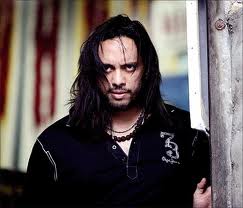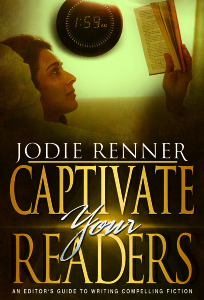 Jodie Renner, editor & author @JodieRennerEd
Jodie Renner, editor & author @JodieRennerEd
For a riveting story, be sure to challenge your hero – or heroine – to the max. Readers need to be constantly worrying about him. Which means his life is in upheaval and he’s struggling, dealing with increasing conflict in the form of serious opposition or threats. One or more forces of opposition should threaten the protagonist or stand in the way of his goals.
Challenges don’t need to be in the form of an actual character. They can be some other kind of opposing force or idea, like a fear, phobia, prejudice, or handicap that is preventing the character from reaching her goals.
The main threat in fiction usually comes in the form of an antagonistic character, who isn’t necessarily a murderous villain. Other determined opponents include romantic rivals, “mean girls,” schoolyard bullies, competing colleagues, or sports rivals.
Antagonists can also fall into a gray zone of opposition characters who aren’t really evil, just at odds with the protagonist we’re rooting for. They can be fascinating too, as we don’t know if they’re going to change sides, so they’re often unpredictable. A few examples include the Tommy Lee Jones character chasing Harrison Ford’s character in the movie The Fugitive and Sheriff Teasle in First Blood, who is after our hero, John Rambo. Or how about Han Solo from Star Wars? Not a villain, but not a good guy, either. He sparks things up though, doesn’t he? We wonder whether these somewhat likeable or understandable bad guys could switch sides at any time.
To pose a credible, significant threat and cause readers to worry, your antagonist should be as clever, powerful, and determined as your protagonist. Challenges and troubles are what make your main character intriguing, compel her to be the best she can be. They force her to draw on resources she never knew she had in order to survive, defeat evil, or attain her goals.
For today’s post, we’ll assume your antagonist is a villain – a mean, even despicable, destructive character we definitely don’t want to root for. He needs to be a formidable obstacle to the protagonist’s goals or a menace to the hero’s loved ones or other innocents. And thrillers, fantasy, and horror require really frightening, nasty villains.
Most of the bad guys in movies and books want the same thing: power. Or maybe revenge or riches. And they don’t care who gets hurt along the way. Or worse, they enjoy causing pain, even torturing their victims.
The antagonist needs to be powerful, a game-changer. As Chuck Wendig says in his excellent blog post “25 Things You Should Know About Antagonists,” “The antagonist is there to push and pull the sequence of events into an arrangement that pleases him. He makes trouble for the protagonist. He is the one upping the stakes. He is the one changing the game and making it harder.”
The protagonist and antagonist have clashing motivations. Their needs, values, and desires are at odds. The antagonist and protagonist could have completely opposite backgrounds and personalities for contrast – or be uncomfortably similar, to show how close the protagonist came or could come to passing over to the dark side.
Most readers are no longer intrigued by “mwoo-ha-ha,” all-evil antagonists, like Captain Hook in Peter Pan. Unless you’re writing middle-grade fiction, be sure your villain isn’t unexplainably horrid, evil for the sake of evil. Today’s sophisticated readers are looking for an antagonist who’s more complex, realistic, and believable.
Chuck Wendig suggests antagonists should be depicted as real people with real problems: “People with wants, needs, fears, motivations. People with families and friends and their own enemies. They’re full-blooded, full-bodied characters. They’re not single-minded villains twirling greasy mustaches.”
For a believable, fascinating antagonist or villain, try to create a unique, memorable bad guy of a type that hasn’t been done to death. Try to give him or her an original background and voice.
Remember that the antagonist is the hero of his own story. He thinks he’s right. He justifies his actions somehow, whether it’s revenge, a thirst for power, ridding society of undesirables, or payback. He may even feel he has a noble or just goal, as in the serial killer of prostitutes.
To create a worthy opponent for the protagonist and a realistic, believable, complex antagonist, get into his mind-set. Ask yourself these questions:
- What does the antagonist want or need?
- Why is he determined to go after it?
- What drives the antagonist? Greed? Revenge? Hatred? Anger? Hurt?
- What is his biggest motivation? To avenge past wrongs? To gain ultimate power?
- Who does he want to suffer or lose out? Why?
- How does he justify his actions? What does he tell himself?
Now create a backstory for your antagonist. Most of it will not show up in your story, but you need to get a handle on what makes him tick to ensure he acts in ways that are in keeping with his background.
Develop his voice. As you do for the protagonist, you can write a free-form rant, where he goes on and on about why he hates someone or something, wants to get revenge, needs to find and kill certain people, and so on.
Show his justification for his goals and actions. Why does he think he’s right and justified in his actions? This will create a more believable, more determined bad guy.
Perhaps identify at some point in your narrative a flashback or allusion to an experience that shows the antagonist as a victim – abused or neglected, treated cruelly by family or others in power. This can create a spark of sympathy while also potentially foreshadowing a particularly nasty incident. (Thanks to thriller author Tom Combs for this suggestion.)
Write some scenes purely from the antagonist’s point of view, away from the protagonist, so readers can find out what makes him tick and how twisted he is. This also creates reader concern for the protagonist, which is always a good thing.
Make him scary, a force to be reckoned with, but not all-powerful, as that’s unrealistic. Give him a few weaknesses, too.
And for added complexity and dimension, take it one step further by showing a human side of the antagonist, something readers can actually relate to, might be afraid they could also fall into. That amps up the tension and reader involvement.
So to create a fascinating, believable antagonist or villain, try to make him or her unique. Delve into their background, find out the goals and motivations that drive them forward. Get into their mind and try to understand them. How do they justify their actions?
Give us a complex villain we love to hate – or a gray antagonist who makes us squirm!
TKZers – Who are some powerful villains who made you shiver in novels or films?
 – And what about your favorite “gray” antagonists or anti-heroes?
– And what about your favorite “gray” antagonists or anti-heroes?
And for a future article, what do you think about all the gray protagonists or anti-heroes cropping up in novels, movies, and TV shows, like Nick in Gone Girl and Walter in Breaking Bad? Do you welcome that trend toward a flawed, unlikeable protagonist? Or do you yearn for more admirable, ethical, heroic heroes to root for?
Jodie Renner is a freelance editor and the award-winning author of three craft-of-writing guides in her series An Editor’s Guide to Writing Compelling Fiction: Fire up Your Fiction, Writing a Killer Thriller, and Captivate Your Readers.
